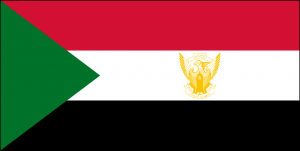Language/Sudanese-arabic/Vocabulary/Clothes
Hi Sudanese Arabic learners! 😊
In this lesson, we will cover vocabulary related to clothes in Sudanese Arabic. Knowing these words will help you communicate effectively in Sudanese Arabic and better understand the culture. Don't forget to check out Find native speakers and ask them any questions you might have!
Types of Clothes[edit | edit source]
Sudan has a hot and dry climate, so it's important to choose clothes wisely. Here are some types of clothes you may find in Sudan:
| Sudanese Arabic | Pronunciation | English |
|---|---|---|
| جلابية | jellabia | Traditional long, loose-fitting garment |
| زربية | zarabia | Men's robes |
| توربان | turban | A head covering made of cloth |
| شماغ | shemagh | A traditional headdress |
| بشت | bisht | A long cloak or gown |
| جبة | jaba | A traditional robe worn by men and women |
Dialogue[edit | edit source]
- Person 1: جايبلك جلابية من السودان (Jayyiblak jellabia min al-Sudan) (I brought you a traditional Sudanese jellabia)
- Person 2: شكرًا، تحفة! (Shukran, tahaafa!) (Thank you, it's beautiful!)
Women's Clothes[edit | edit source]
Sudanese women usually wear traditional and modest clothing. Here are some examples:
| Sudanese Arabic | Pronunciation | English |
|---|---|---|
| توب | toub | A long dress |
| تيباز | tibaa's | Traditional Sudanese veil |
| عباية | abaaya | A loose-fitting cloak that covers the head and body |
| غترة | ghutra | A head covering |
Cultural Tip[edit | edit source]
In Sudanese culture, it is important for women to cover their hair and be modestly dressed. Women often wear hijabs or other types of head coverings in public.
Dialogue[edit | edit source]
- Person 1: عطيني توبك الجديدة تشوفيها باللون الأخضر (Atiini toubak al-jadeeda tshoofiiha bil-loon al-akhDhar) (Give me your new dress so I can see it in green)
- Person 2: لأ، ما عندي لون أخضر (Laa, maa 'andii loon akhDhar) (No, I don't have it in green)
Men's Clothes[edit | edit source]
Men's clothing in Sudan is similar to that of other Arab countries. Here are some examples:
| Sudanese Arabic | Pronunciation | English |
|---|---|---|
| قميص | qamees | A long-sleeved shirt |
| شبشب | shabshab | Traditional sandals made of leather or other materials |
| شال | shaal | Scarf or shawl worn around the neck |
| طربوش | tarboosh | A type of hat |
Cultural Tip[edit | edit source]
Men in Sudan usually wear traditional robes and head coverings in public.
Dialogue[edit | edit source]
- Person 1: في العيد بحب أجيب قميص جديد (Fii al-'iid b7eb 'ajiib qamees jadeed) (On the holiday, I like to get a new shirt)
- Person 2: أمانة اشتريلك شبشب كويس (Amaana eshtareelek shabshab kwayyes) (Please buy yourself some good sandals)
Children's Clothes[edit | edit source]
Children's clothing in Sudan is similar to adult clothing, but with smaller sizes. Here are some examples:
| Sudanese Arabic | Pronunciation | English |
|---|---|---|
| بدلة | badla | A suit or formal wear for boys |
| فستان | wastan | A dress or frock for girls |
| براقع | bara'iq | Socks |
| حفاضات | haFaaDaat | Diapers |
Cultural Tip[edit | edit source]
In Sudanese culture, it is common for people to dress children in fancy clothing, especially for special events or holidays.
Dialogue[edit | edit source]
- Person 1: وين براقع ولدك؟ (Wayn bara'iq waladak?) (Where are your son's socks?)
- Person 2: نسيتهم في السيارة (Neseetohom fil sayyaara) (I forgot them in the car)
Conclusion[edit | edit source]
Learning vocabulary related to clothing is an essential part of mastering any language. In this lesson, we covered some basic clothing vocabulary in Sudanese Arabic. To improve your Sudanese Arabic vocabulary, don't forget to practice with native speakers on Polyglot Club.
➡ If you have any questions, please ask them in the comments section below.
➡ Feel free to edit this wiki page if you think it can be improved. 😎
Having concluded this lesson, consider checking out these related pages: Days of the Week, Food, Fruits & Animals.

